
Winter Lawn Care | Basic Tips of Winter Lawn Care
Winter is characterized by extreme weather conditions that can stress your lawn, making winter lawn care important. Cold and dry spells are likely to reduce the growth rate of your lawn. Most grasses enter dormancy during this cold season. Also, to make matters worse, frosts are likely to fall, coupled with snow that negatively affects your grass’s growth.
In winter, most people cease to maintain their grass. However, if you want to have a lush lawn when dormancy passes, neglecting lawn maintenance is a no. Although there isn’t a lot to do for your lawn during the cold months, there are activities you can do to prepare your lawn passing this extreme season. Here I share some winter lawn care tips with you to help you achieve a green carpet of lawn and change your landscape’s appearance.
Aerate before the first snow
Aeration is one of the most crucial winter lawn care chores you should try out. It’s the process of removing plugs of soil. Although it’s cushy to aerate during the warmer season, if you fail to do the chore during that time, aerating in winter is possible. You should, however, aerate when the ground isn’t frozen. Perhaps you wonder why you need to aerate. Here is the reason- it prevents soil compaction, excess thatch, and improves soil drainage. Poor drainage causes crown hydration, a condition whereby grass absorbs water, and the water freezes in its cells during cold weather.
With this in mind, it’s essential to aerate to improve soil drainage. The reduction of excess thatch through aeration is helpful. A thick layer of the thatch on your lawn can pave the way for fungal infections, which can weaken your grass or destroy it. You can aerate manually or use power aerating tools. This will depend on how big your patch of lawn is. You can aerate a small patch of lawn manually. When you’re done aerating, you can spread a winter fertilizer on your lawn.
Don’t walk on a wet lawn
Harsh weather conditions characterize winters. Frosts and snow are likely to occur more frequently during this time. Winter frost can do your lawn a great deal of harm, especially if you walk on it during this time. When there is a frost, keep your distance from your lawn. You don’t want to weaken your lawn by walking on it, as it will become susceptible to diseases. To prevent people who walk over the lawn, provide paths on sidewalks.
Remove leaves or debris when it’s necessary
You can do to maintain your lawn to remove any leaves or litter that fall on your grass. Leaves and debris are not suitable for your lawn because they block sunlight necessary for the process of photosynthesis and the growth of your lawn. They also prevent moisture from getting to your grass. When there is a frost, and you see debris on your lawn, you’ll have to leave it there until a dry day comes. Don’t walk on your lawn when there is frost. You can rake to get rid of debris once or twice a week, depending on necessity.
Mow your grass when necessary
If you fail to cut your lawn before the cold weather hits, you can cut it in winter on a dry day. However, when mowing, you shouldn’t cut your grass too short as this can cause problems like dryness. Set the cutting height higher. Your cutting height during this time should be higher than the cutting height in the growing season.
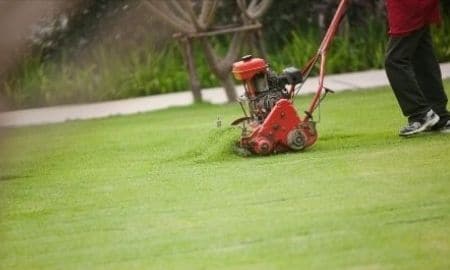
Mowing your lawn when the grass and ground are wet is the last thing you should do. This is because it’ll expose your lawn to harsh winter weather conditions. You should also keep in mind that during the cold season, the ground tends to be soft. With this in mind, don’t rush turning your lawnmower as this can damage your grass.
Remove clippings from your lawn:
Although mulching your clippings can be a great way of nourishing your lawn, if your grass is wet and tall when you cut it, clumps of clippings can pave the way for diseases. They can also be unsightly. It is essential, therefore, to remove large clippings from your grass. All you need is a rake to remove grass clippings, which you can use to get clippings in one place and put them in a bag.
Mulch small clippings from your lawn:
If your cut grass was not too tall, you could spread the small clippings evenly on the grass to add nutrients to your lawn and ensure your lawn’s healthy growth. Small clippings, unlike large ones from tall grass, won’t be unsightly when they dry out. Mulching small clippings is like killing two birds with one stone. Your lawn gets nutrients, and at the same time, your landscape remains beautiful.
Add Mulch before it’s too cold
Mulching is a crucial winter lawn care chore. Adding a thin layer of mulch ensures your lawn is protected from frost and snow. It is also a great way of preventing the soil from freezing, which is excellent if you want your grass to survive the harsh winter conditions. Note that thick layer of mulch to your grass will do more harm than good. Make sure you add a thin layer of mulch for the best results.
Winterize your lawn mower
Winter isn’t the wrong time to winterize your lawn mower if you skipped the fall process. Your mower is an important tool; hence it’s important to keep it functioning. Winterizing it will ensure that the blades are sharp enough to cut your lawn evenly. Winterizing your lawn mower is key if you want to prevent grass diseases and transform your landscape’s look.
Look out for weeds
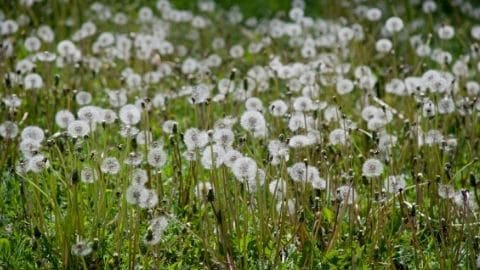
Many weeds can take advantage of cold weather and infest your lawn. Weeds can be stubborn and pain in the neck as they hinder your lawn’s growth and make your yard an eyesore. Weeds in your grass can make your landscape look deserted. Investing in pre-emergent weed control is quite rewarding as it stops future weed infestations.
Properly treat your lawn
To enrich your soil and promote grass growth, you can add to your soil organic supplements and microbes. In winter, you won’t need to water your lawn as much as in summer. Only water your lawn, when it’s necessary, in the morning so that the water has time to dry up during the day. Furthermore, winter is characterized by snow and cold temperatures, making it a time when snow mold can threaten your grass.
Snow mold favors wet and cold weather. It can cause lasting damage to your grass; therefore, you should treat your grass. You can use special fungicides to curb the snow mold challenge. Moss can be a challenge at times. In winter, you can grab your lawn treatment product to curb any moss challenge. However, you shouldn’t over treat your lawn. This is because growth is slow and sometimes zero during winter; hence treated grass may not survive treatments.
Fertilize
Fertilizing your grass is not a waste of time and resources. It is worthwhile since it promotes the growth of turf. If you are to see a beautiful lawn in spring, proper and periodic fertilizer application is the way to go. Feeding your soil with nutrients in winter will significantly help your grass to grow healthy and strong. It will enable grass to store nutrients that will be much needed to come spring.
A winterizing slow-release fertilizer comes in handy during the cold winter months. Applying a winter fertilizer is also a great way to tackle the challenge of snow mold. When fertilizing, make sure you do not overdo it. Overfeeding your lawn in winter may result in increased growth, which can be destroyed by the freezing temperatures and harsh weather.
Apply Colourguard plus
Applying Colourguard plus is a worthwhile investment if you want your grass to be protected from the harsh winter weather conditions. It is an organic grass colorant that can do wonders for your lawn. The green pigment it contains is taken in by the grass leaf, causing your grass to have a beautiful green color. With this product, your lawn doesn’t have to be unsightly due to discoloration. The good thing about Colorguard plus is that it contains nitrogen in liquid form. This nitrogen protects your grass from winter frost and strengthens it.
Liming
Although the rate of growth for your grass is low during winter, your grass still needs to utilize fertilizer and other several nutrients. Proper liming during this time is key to healthy grass and should be part of your winter lawn care routine. You should lime in accordance with the soil pH test you would have done for the best results. You probably want your lawn to benefit from the nutrients available in the soil and those you add-in through fertilizers. If this is so, then liming is the way to go.
Reduce lawn diseases
Lawn diseases can cost you if you do not control them. Dead, dried, or discolored lawn patches are signs of lawn diseases. The following actions can help reduce lawn diseases:
- Mowing helps reduce thatch, which can hinder grass from getting enough sunlight and moisture and weakening it. Weakened grass is more susceptible to diseases.
- Aeration: It is vital as it improves drainage. Poor drainage can lead to lawn diseases.
- Use of fungicide: diseases caused by fungi are quite common on most grasses. Use fungicides to kill any fungi that can cause harm to your grass.
- Feed your lawn: grass food comes in handy if you want your lawn to be healthy and able to fight disease. A lawn food with a lot of potassium in it is a great choice to feed your lawn.
- Clean your lawn mower: cleaning your lawn mower regularly will ensure you don’t spread diseases on your lawn.
- Invest in a soil wetting agent: this will help water get to your grass roots rather than reach the soil surface only. This will encourage the growth of grass and prevent diseases.
- Remove leaves and debris: debris and leaves on your grass can deny your grass access to sunlight and cause diseases.
Final Verdict
Although winter is not a growing season for your grass, winter lawn care is a must and will pay off. It’s essential to keep your lawn neat during winter by mowing it when necessary when the weather is mild. Likewise, feeding your grass will enable it to store nutrients that will be valuable come spring and removing weeds will ensure that your grass will get access to nutrients and water and encourage growth.
Actually, all those mentioned above chores can help your grass survive winter and become healthy throughout the warmer months. Although you don’t have to maintain your lawn regularly during this season, following the tips above will ensure you achieve beautiful grass that will transform your yard looks.

Kazi Taslim
Editor
Poweredgrip ensures that an expert team of writers provides you with excellent, unbiased informational content. We are dedicated to giving you the most up-to-date and smoothest information possible. We share incomparable tips and tricks that give you awareness and confidence when making your buying decisions. Our team is enthusiastic, dedicated, and hardworking. Kazi Taslim is the editor and head of our experienced writing team.
Related Post
Best Time to Dethatch Lawn | Lawn Dethatching Tips
We all see lawns in parks or around buildings such as a house, office, apartments, or commercial premises. Gardens provide an enticing look, and people keep and maintain lawns for the scenic or recreational feel. However, this beautiful green requires a lot of work...
Lawn Mowing Safety Tips | To Know Before You Mow
Mowing your lawn is one of those "macho" chores that are generally regarded as masculine. The whole idea of crank starting the mower's petrol engine and getting all sweaty pulling and pushing it forth makes one feel invincible. "What could really go wrong?" you might...
When to Start Mowing Lawn | The First Cut of The Year
Lawn mowing is not an event confined to a specific calendar date. Instead, you should monitor your grass length and mow only when necessary. Every homeowner or gardener needs to know when to start mowing lawn to maintain a clean and neat grass cut. This article will...
How Often to Mow Lawn: Guide to Avoid Mowing Mistakes
It is said sweet comes from sweat. The same goes for achieving a good lawn. You do not just wake up one day and see a beautiful lawn in your yard. You need to maintain your lawn if you want it to be healthy and beautiful. Mowing grass is a must-do if you're going to...
Best Time to Plant Grass Seed | Step By Step Guide
If you want to achieve a healthy, lush lawn, it is essential to properly plant your grass seed. Proper timing will allow your grass seed to germinate well and get established well before unfavorable weather conditions and stresses come. If your planting season aligns...
When to Aerate Lawn I Complete Lawn Aeration Guide
Lawn aeration is vital for the reduction of turf's thatch layer and for combating soil compaction. For the aeration to be adequate, you must carry it out at a specific time depending on a set of conditions, including the cultivar or type of lawn, weather...

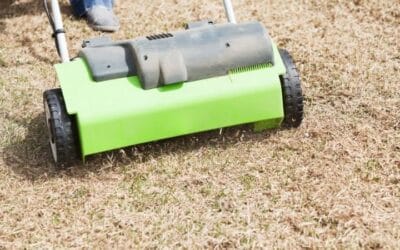
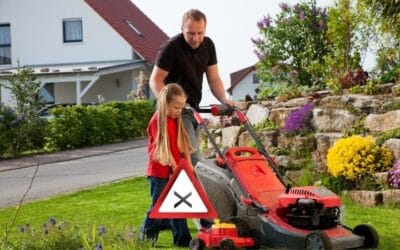
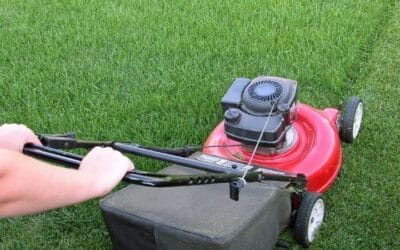
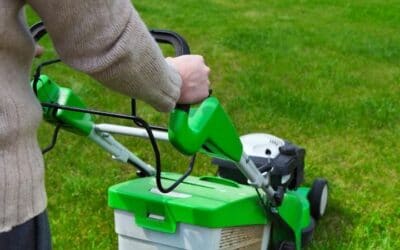
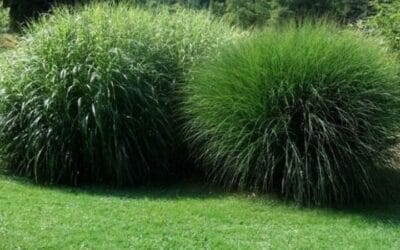

Trackbacks/Pingbacks